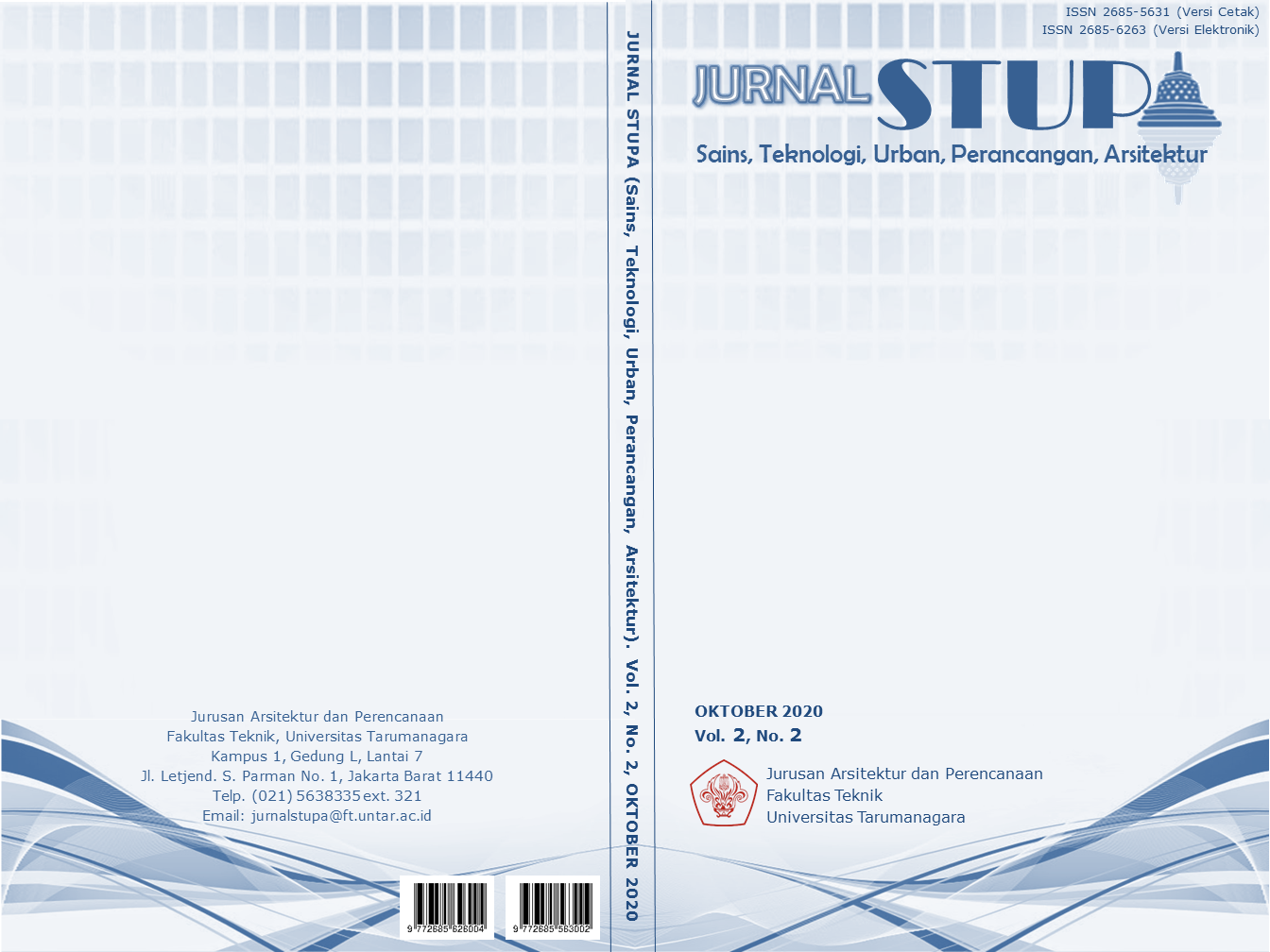FASILITAS PENGGEMAR PAKAIAN EKONOMIS
Main Article Content
Abstract
As time goes by, people, especially in urban areas, tend to have individualistic characteristics due to their busy daily routines. Where most of the time spent at work, home or shopping centers. Humans as social creatures who should socialize and interact with others to meet social needs. To meet social needs in the current modern era, it takes a social container that can accommodate the activities of the surrounding community. So that people can meet with each other, socialize and also interact through these social media platforms. Central Jakarta, precisely in the Senen Area, there is the Senen Market which is one of the historic / iconic buildings known as a dense place for trade activities, namely trade / services, namely the Senen Market, known as the Thrift center in Jakarta today, the community center can search clothes at economical prices. However, the daily life of the Senen people tends to only sell clothes that saturate the Senen community so that the Senen Market is now fading. As well as Senen, there are very few entertainment venues in the Senen Region, causing the Senen economy to decline. This is also related to Malcolm Barnard's theory that clothing can be a verbal and non-verbal communication tool that can later restore Senen area to an area where people do not trade but can interact, socialize, and hone the creativity of the Clothing Fan Facility Economical. Where this project aims to support the Senen Market also reduces the saturation of the Senen Market residents in their daily business activities as well as to facilitate the needs of service users at the Senen Bus Station. This project is also intended as a forum for Thrift communities and the surrounding arts to interact with other communities and can also show the works / history of economic clothing that people will see and buy so that not only trading, but the public can learn and understand the meaning of the clothes which finally triggers the community to interact, socialize, and hone their creativity.
Keywords: clothing; Pasar Senen; Thrift
Abstrak
Seiring perkembangannya zaman, masyarakat khususnya di perkotaan cenderung memiliki sifat yang individualis dikarenakan rutinitas sehari-hari yang padat. Dimana sebagian besar waktu dihabiskan di tempat kerja, rumah ataupun pusat perbelanjaan. Manusia sebagai makhluk sosial yang seharusnya bersosialisasi dan berinteraksi dengan sesama untuk memenuhi kebutuhan sosial. Untuk memenuhi kebutuhan sosial di era modern saat ini, dibutuhkan wadah sosial yang dapat menampung aktivitas-aktivitas masyarakat sekitar. Sehingga masyarakat dapat saling bertemu, bersosialisasi dan juga berinteraksi melalui media wadah sosial tersebut. Jakarta Pusat, tepatnya di Kawasan Senen, terdapat Pasar Senen yang merupakan salah satu bangunan yang bersejarah / ikonik yang dikenal sebagai tempat yang padat akan aktivitas berniaganya yaitu perdagangan / jasa yaitu Pasar Senen , dikenal sebagai pusat thrift di Jakarta saat ini yaitu pusat masyarakat dapat mencari pakaian dengan harga yang ekonomis. Akan tetapi keseharian masyarakat Senen cenderung hanya menjual pakaian saja membuat jenuh masyarakat Senen sehingga Pasar Senen kini meredup. Serta Senen terdapat minim sekali tempat hiburan yang terdapat di Kawasan Senen sehingga menimbulkan perekonomian Senen menurun. Hal ini berkaitan juga dengan teori dari Malcolm Barnard bahwa pakaian dapat menjadi sebuah alat komunikasi baik verbal maupun non-verbal yang nantinya dapat memulihkan kembali kawasan Senen menjadi Kawasan yang masyarakatnya tidak berdagang saja akan tetapi dapat berinteraksi, bersosialisasi, serta mengasah kreatifitas dari Fasilitas Penggemar Pakaian Ekonomis. Dimana Proyek ini bertujuan untuk menunjang Pasar Senen juga mengurangi kejenuhan penghuni Pasar Senen dalam kegiatan berniaganya sehari-hari juga untuk memfasilitasi kebutuhan pengguna jasa di Stasiun Bus Senen. Proyek ini juga ditujukan sebagai wadah bagi komunitas-komunitas thrift maupun seni sekitar untuk berinteraksi dengan komunitas lainnya dan juga dapat menunjukan karya-karya / sejarah dari pakaian ekonomis yang masyarakat akan lihat dan beli sehingga tidak hanya berdagang saja , akan tetapi masyarakat dapat mempelajari dan memahami arti dari pakaian tersebut yang akhirnya memicu masyarakat untuk berinteraksi, bersosialisasi, serta mengasah kreatifitas mereka.
Article Details
References
Barnard, M. (1996). Fashion as Communication. New York : Routledge
Edwards. (1993). Measuring Compulsive Buying Behaviour. Hungary : Eötvös Loránd University
Gehl, J. (1971). Life Between Buildings. California: Island Press
Morisson, A. (2018). A Typology of Places in the Knowledge Economy: Towards the Fourth Place.
Oldenburg, R. (1997). The Great, Good Place. Cambridge : Da Capro Press



